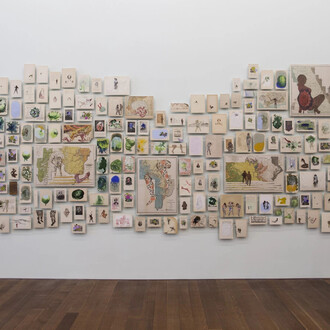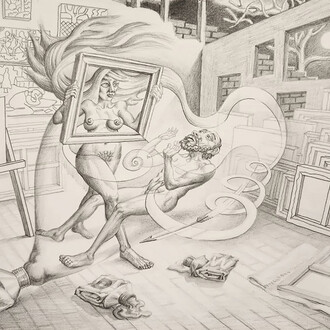Deeply engaged in art history, Andrew Lord (British, born 1950) uses traditional ceramic forms and techniques that reference 19th- and 20th-century painting and sculpture. “In the 1970s,” Lord recalls, “I looked at paintings in Amsterdam and Paris and discovered Gauguin’s ceramics, which seemed to have meaning in a way I’d not seen before in ceramics.” Like Gauguin, Lord straddles the boundaries of fine art and craft, abandoning the functionality and practicality of his objects in favor of conceptual pursuits. Through serial display and repetitive investigations of form, Lord transforms everyday objects into extraordinary expressions of light and shadow, volume and plasticity, surface and shape.
This fall the Bluhm Family Terrace welcomes a new series of bronze and ceramic sculptures Lord conceived during a recent residency in Paris. Lord was struck by the title of a mural by Paul Baudouin in the Petit Palais, Les heures du jour et de la nuit (The Hours of the Day and of the Night), which described Lord’s own days of artistic searching without a clear destination. While in Paris, he collected images from 19th- and 20th-century painting—especially works by Picasso—that portray time passing and the fragility of the human condition: “To give these images plastic form, I passed them through each step of making that had come before, as if watching film stills through a sleepless night, until I took the most familiar form, the human figure, extracted it from its surrounding, connected it to the night, to time, to my sleeplessness, filtered through everything I made before.”
The result is the Art Institute’s presentation Unslumbrous Night. This new body of work includes an array of 15 figures—such as a juggler, an acrobat, and a recumbent woman—alongside two forms that reference time: a candle and a moon. The poetic installation, which borrows its title from John Keats’s poem “Endymion,” unfolds on the terrace and continues into the museum’s Terzo Piano.
















